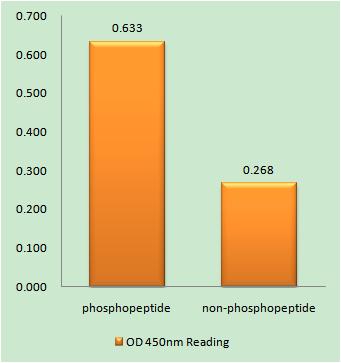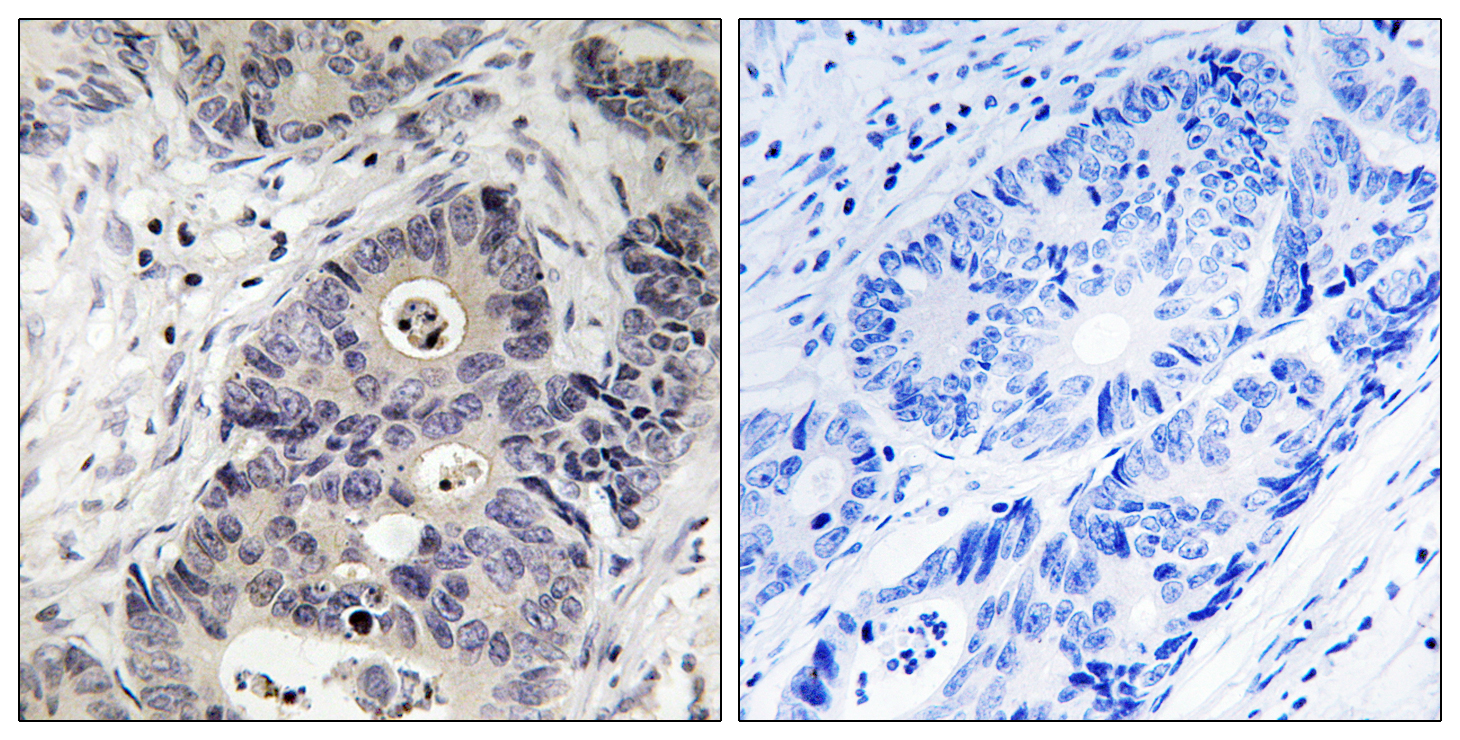iNOS (phospho Tyr151) Polyclonal Antibody
- Catalog No.:YP1067
- Applications:IHC;IF;ELISA
- Reactivity:Human;Mouse;Rat
- Target:
- NOS2/iNOS
- Fields:
- >>Arginine biosynthesis;>>Arginine and proline metabolism;>>Metabolic pathways;>>Calcium signaling pathway;>>HIF-1 signaling pathway;>>Peroxisome;>>Apelin signaling pathway;>>Relaxin signaling pathway;>>Alzheimer disease;>>Amyotrophic lateral sclerosis;>>Pathways of neurodegeneration - multiple diseases;>>Pertussis;>>Leishmaniasis;>>Chagas disease;>>Toxoplasmosis;>>Amoebiasis;>>Tuberculosis;>>Pathways in cancer;>>Small cell lung cancer
- Gene Name:
- NOS2, INOS
- Protein Name:
- Nitric oxide synthase inducible
- Human Gene Id:
- 4843
- Human Swiss Prot No:
- P35228
- Mouse Gene Id:
- 18126
- Mouse Swiss Prot No:
- P29477
- Rat Gene Id:
- 24599
- Rat Swiss Prot No:
- Q06518
- Immunogen:
- The antiserum was produced against synthesized peptide derived from human iNOS around the phosphorylation site of Tyr151. AA range:117-166
- Specificity:
- Phospho-NOS2 (Y151) Polyclonal Antibody detects endogenous levels of NOS2 protein only when phosphorylated at Y151.
- Formulation:
- Liquid in PBS containing 50% glycerol, 0.5% BSA and 0.02% sodium azide.
- Source:
- Polyclonal, Rabbit,IgG
- Dilution:
- IHC 1:100 - 1:300. ELISA: 1:10000.. IF 1:50-200
- Purification:
- The antibody was affinity-purified from rabbit antiserum by affinity-chromatography using epitope-specific immunogen.
- Concentration:
- 1 mg/ml
- Storage Stability:
- -15°C to -25°C/1 year(Do not lower than -25°C)
- Other Name:
- NOS2;NOS2A;Nitric oxide synthase; inducible;Hepatocyte NOS;HEP-NOS;Inducible NO synthase;Inducible NOS;iNOS;NOS type II;Peptidyl-cysteine S-nitrosylase NOS2
- Molecular Weight(Da):
- 131kD
- Background:
- Nitric oxide is a reactive free radical which acts as a biologic mediator in several processes, including neurotransmission and antimicrobial and antitumoral activities. This gene encodes a nitric oxide synthase which is expressed in liver and is inducible by a combination of lipopolysaccharide and certain cytokines. Three related pseudogenes are located within the Smith-Magenis syndrome region on chromosome 17. [provided by RefSeq, Jul 2008],
- Function:
- catalytic activity:L-arginine + n NADPH + n H(+) + m O(2) = citrulline + nitric oxide + n NADP(+).,cofactor:Binds 1 FAD.,cofactor:Binds 1 FMN.,cofactor:Heme group.,cofactor:Tetrahydrobiopterin (BH4). May stabilize the dimeric form of the enzyme.,enzyme regulation:Regulated by calcium/calmodulin. Aspirin inhibits expression and function of this enzyme and effects may be exerted at the level of translational/post-translational modification and directly on the catalytic activity.,function:Produces nitric oxide (NO) which is a messenger molecule with diverse functions throughout the body. In macrophages, NO mediates tumoricidal and bactericidal actions.,induction:By endotoxins and cytokines.,online information:Nitric oxide synthase entry,similarity:Belongs to the NOS family.,similarity:Contains 1 FAD-binding FR-type domain.,similarity:Contains 1 flavodoxin-like domain.,subunit:Homodimer. Bin
- Subcellular Location:
- Cytoplasm, cytosol . Localizes as discrete foci scattered throughout the cytosol and in the presence of SPSB1 and SPSB4, exhibits a more diffuse cytosolic localization. .
- Expression:
- Expressed in the liver, retina, bone cells and airway epithelial cells of the lung. Not expressed in the platelets. Expressed in chondrocytes (PubMed:7504305).
- June 19-2018
- WESTERN IMMUNOBLOTTING PROTOCOL
- June 19-2018
- IMMUNOHISTOCHEMISTRY-PARAFFIN PROTOCOL
- June 19-2018
- IMMUNOFLUORESCENCE PROTOCOL
- September 08-2020
- FLOW-CYTOMEYRT-PROTOCOL
- May 20-2022
- Cell-Based ELISA│解您多样本WB检测之困扰
- July 13-2018
- CELL-BASED-ELISA-PROTOCOL-FOR-ACETYL-PROTEIN
- July 13-2018
- CELL-BASED-ELISA-PROTOCOL-FOR-PHOSPHO-PROTEIN
- July 13-2018
- Antibody-FAQs
- Products Images

- Enzyme-Linked Immunosorbent Assay (Phospho-ELISA) for Immunogen Phosphopeptide (Phospho-left) and Non-Phosphopeptide (Phospho-right), using iNOS (Phospho-Tyr151) Antibody

- Immunohistochemistry analysis of paraffin-embedded human colon carcinoma, using iNOS (Phospho-Tyr151) Antibody. The picture on the right is blocked with the phospho peptide.



